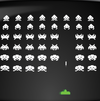Convenient private cloud with Seafile
|
Quick Cleanup
To save storage space, Seafile uses a deduplication technology where different file versions and libraries share the same data block. Deleting such libraries or files does not immediately return memory to the system, causing unused blocks to languish on the server's hard disk and clog it over time. To clean up the space, you can run a garbage collection program now and then. You can find a detailed guide on the Seafile wiki [5].
Conclusion
Although the PHP and MySQL-based ownCloud provides web space, you can't beat having your own server with Seafile implemented in C and Python. Unlike ownCloud, the data exchanger limits itself to the essential functions for online storage and collaboration. Besides separating libraries and files, you can also send messages and combine users into groups.
Because Seafile works with unprivileged ports, it doesn't involve any extra boot privileges at startup. The application is richly documented and currently supports eight languages. The software ran without a problem and remained stable during the multiple weeks of testing and needed to be stopped only once for a software update.
The Seafile client is available for most of the major operating systems. The graphical clients are easy to use and even the command-line client requires only a small learning curve. For those who have found Dropbox and Google Drive too unsafe but still want to share or synchronize files, Seafile is a viable alternative. l
Infos
- ownCloud: http://owncloud.org
- Seafile: http://seafile.com
- Seafile GitHub: https://github.com/haiwen/seafile/
- Download Seafile: http://www.seafile.com/en/download/
- Seafile wiki: https://github.com/haiwen/seafile/wiki
Buy this article as PDF
Pages: 6
(incl. VAT)




